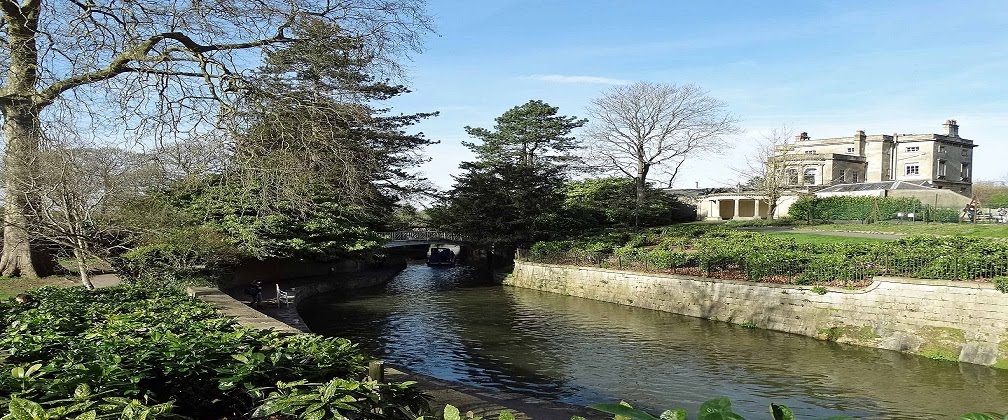Now it's the Fashion Museum and their History of Fashion in 100 Objects, running until January 2019, alongside their smaller and recently opened Lace in Fashion.
I've split up my selected images between my blogs here and over on my Serena Lake website, so I hope you'll visit Serena's page to see some of the interesting 18th century items I've chosen, reflecting the time periods I'll be writing historical romances in, under my pseudonym.
Over here I'll be going 19th to 20th century.
(Many of these images have had light applied in the preparation for sharing them with you. Also with the big panes of class reflections or shadows do sometimes get caught, so whenever possible I crop the images to centre in on specific items.)
Bath is often associated with Jane Austen and the wonderful costume dramas of her works, so here's a section of dresses from the first half of the 19th century with it's muslin and printed cottons, elegant classical designs and trains going onto frills and flounces...
 |
| Early to mid-1800's... |
The shoes on the raised platform (bottom left) can be seen in more detail on Serena's blog post.
There was a delightful display of baby bootees too, again from the 1800's. Some were embroidered, others quilted and fairly plain.
 |
| Baby footwear... |
Some men's clothes were included in the 100 objects, but I suspect that not as many items may have survived as women's. There were waistcoats, jackets and a lovely velvet suit- whoever the man was that wore it, he must have had women wanting to say hello!
Also there was a pair of men's trousers from the 1820's, as the display moved into the Victorian period and clothes seemed to become more sober.
There were a few items in their own individual display cabinets.
I particularly liked the Dolman from the 1870's.
 |
| Lady's Dolman from the 1870's... |
This would have been worn over a dress with a bustle. It was part cape, part coat. Some of the large cashmere or paisley shawls were used to make these new types of outdoor wear. As it hangs over the bustle at the back, it does drape well and add to the shape.
Underwear did feature. There were some stays, and this corset from the 1890's.
 |
| Evening corset... |
It's silk stiffened with whalebone. The waist is 21.5 inches with the tight lacing, but could be let out if needed. I'm not sure anyone would want to eat much laced that tight!
On into the 20th century I chose one item I hadn't realised existed- and I suspect they will appear in the party scene in my 1920's story. Dress Clips.
 |
| A selection of 1920's Dress Clips from the Beeson Collection... |
These clips are just a small part of 350 that were collected by a primary school teacher, in Frome, Somerset, Sheila Beeson - over a 40 year period.
From there the exhibition moved on through the WWII and the post war period.
For me fashion seemed to have lost its way after the 1930's. Now we're just repeating the past 50-60 years with slight variations.
Choosing the 100 objects that represent the changing face of fashion history must have taken a lot of discussion and planning. And that's before the museum even began the process of creating the display.
No matter the time period you're interested in, there's something in the exhibition to be appreciated.
There's more shoes, and the additional Lace exhibition in the darker storeroom area, displaying how hand-made and manufactured lace has been used in clothing across the decades too.










